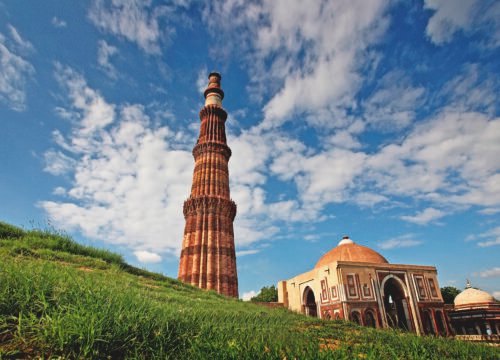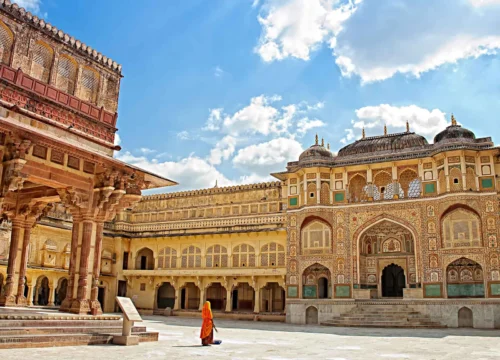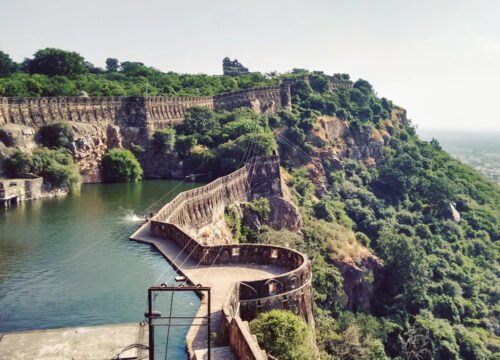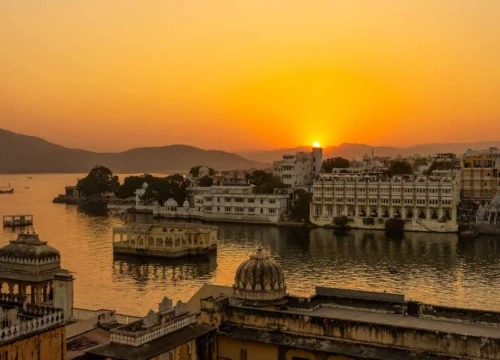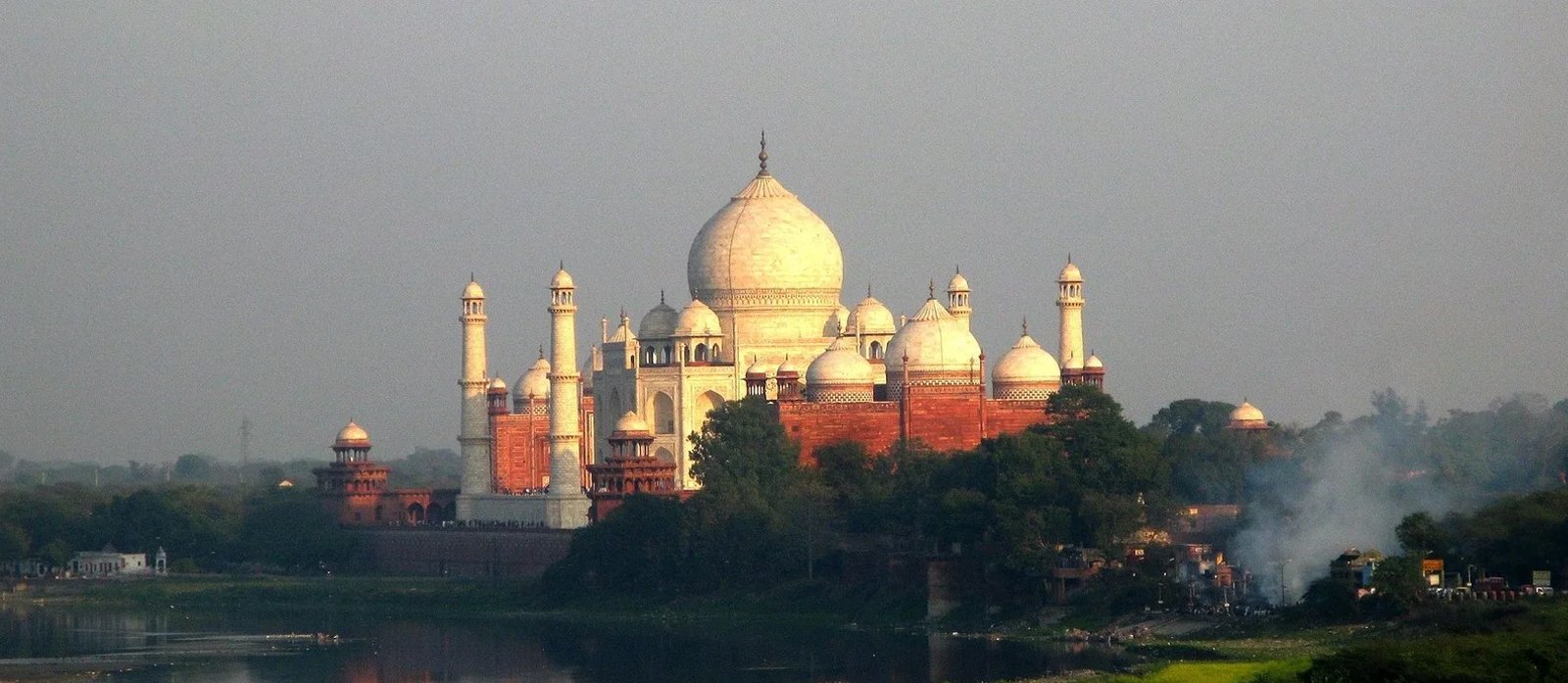
Agra Awaits : - Discovering the Timeless Wonders Beyond the Taj Mahal
Agra—perched on the banks of the Yamuna River in Uttar Pradesh—is globally celebrated as the home of the Taj Mahal, but this iconic white-marble mausoleum is just one jewel in the city’s treasure chest. Steeped in Mughal grandeur, architectural finesse, and centuries of rich culture, Agra is a heritage lover’s paradise that offers much more than postcard-perfect views of the Taj.
Founded in the early 16th century by Sultan Sikandar Lodi, Agra rose to prominence under the Mughals and flourished as a seat of power, art, and craftsmanship. Today, it invites travelers to walk through its timeless monuments, aromatic markets, and vibrant streets to experience India’s imperial past in full color.
Must - Visit Historical Sites in Agra
Taj Mahal : A Monument to Eternal Love
There’s no bypassing the Taj Mahal, a UNESCO World Heritage Site and one of the Seven Wonders of the World. Commissioned by Emperor Shah Jahan in memory of his wife Mumtaz Mahal, this white marble mausoleum is as poetic as it is architectural. At sunrise and sunset, the play of light transforms its facade into a dreamlike vision—making it a must-see not just once, but twice.
Agra Fort : A Fortress of Power and Prestige
Just 2.5 kilometers from the Taj stands Agra Fort, another UNESCO World Heritage Site. Built by Akbar in 1565 and later embellished by his successors, this red sandstone fort is a vast complex of royal quarters, mosques, halls, and courtyards. Highlights include:
- Diwan-i-Am and Diwan-i-Khas
- Jahangir’s Palace
- Khas Mahal
- Panoramic views of the Taj from the fort’s walls
Fatehpur Sikri : Akbar’s Abandoned City
Located 40 km west of Agra, Fatehpur Sikri was Akbar’s capital for 14 years. The city, built entirely in red sandstone, now stands deserted but beautifully preserved. Walk through Buland Darwaza, the Tomb of Salim Chishti, and the five-story Panch Mahal to feel the echoes of a golden era that once ruled India.
Itimad-ud-Daulah’s Tomb : The Baby Taj
Often overshadowed by its more famous cousin, the Tomb of Itimad-ud-Daulah is a delicate, jewel-box structure set in a Persian-style garden. Commissioned by Empress Nur Jahan for her father, the tomb features pietra dura inlay, fine lattice screens, and intricate marble carvings—an early glimpse into the artistry that culminated in the Taj Mahal.
Mehtab Bagh : The Moonlight Garden
For a less crowded, postcard-worthy view of the Taj Mahal, head across the Yamuna to Mehtab Bagh. This garden, built by Babur and later revived by Shah Jahan, aligns perfectly with the Taj and offers sunset photography like nowhere else in the city.
Akbar’s Tomb, Sikandra
Located 10 km from the city center in Sikandra, this grand mausoleum was designed by Akbar himself. Combining Islamic, Hindu, Jain, and Christian motifs, it reflects the emperor’s philosophy of religious harmony. Surrounded by lush Mughal gardens, it’s a peaceful retreat from the city’s hustle.
Agra’s Culinary Delights : Flavors of the Mughal Table
Agra’s cuisine is as regal as its monuments, heavily influenced by Mughal traditions and local North Indian flavors.
Petha : The Signature Sweet
No visit is complete without tasting Agra Petha, a chewy, translucent sweet made from ash gourd and flavored with saffron, rose, or cardamom. Available in dozens of varieties, it’s the most iconic edible souvenir from the city.
Mughlai Cuisine : A Royal Feast
Indulge in slow-cooked dishes like:
- Biryani
- Nihari
- Chicken korma
- Mutton kebabs
Best savored at local favorites like Pinch of Spice, Peshawri, and the upscale Esphahan at the Oberoi Amarvilas.
Bedai and Jalebi : Breakfast with a Kick
Start your morning like a true local with Bedai—a spicy potato curry served with deep-fried, crispy bread—and jalebi, the golden, syrup-soaked spirals that add the perfect sweet counterpoint.
Dalmoth: The Anytime Snack
Spicy, crunchy, and addictive, dalmoth is a lentil-based snack that pairs perfectly with evening tea. It also makes for a great edible gift to carry home.
Best Markets for Shopping in Agra
Agra is known not just for marble inlay work but also for leather, embroidery, jewelry, and street-style trinkets.
Sadar Bazaar
Agra’s liveliest market, Sadar Bazaar is the go-to place for:
- Leather jackets and bags
- Marble handicrafts
- Local sweets and spices
Kinari Bazaar
Located near Jama Masjid, Kinari Bazaar is a maze of lanes buzzing with:
- Zari and sequin work
- Traditional Indian attire
- Wedding jewelry and accessories
Taj Mahal Complex Shops
Outside the Taj complex, stalls sell:
- Miniature Taj replicas
- Handcrafted souvenirs
- Marble decor items
Though touristy, prices can be reasonable with good bargaining.
Subhash Bazaar
Specializing in silk sarees, dress materials, and embroidered fabrics, Subhash Bazaar is a favorite for textile enthusiasts looking for quality and color.
Best Time to Visit Agra
- October to March: Ideal weather for sightseeing and outdoor exploration
- April to June: Hot and dry; avoid unless you’re accustomed to Indian summers
- July to September: Off-season with fewer crowds and greener landscapes, though rain may interrupt plans
Getting to Agra
- By Air: Delhi (230 km) is the nearest major airport
- By Train: Agra Cantt is well-connected to Delhi, Jaipur, Varanasi, and Mumbai
- By Road: Easily accessible via the Yamuna Expressway from Delhi (approx. 3.5 hours)
Why Agra Should Be on Your Bucket List
Agra is much more than a pit stop on the Golden Triangle. It’s a living museum of Mughal art, romance, and legacy, where every dome, archway, and cobbled path whispers stories of an opulent past. Whether you’re watching the Taj change colors at sunrise, tasting a fresh jalebi on a bustling street, or marveling at the symmetrical beauty of Mughal gardens, Agra envelops you in a cultural richness that few cities can match.

 Toll-Free 1-855-952-6526
Toll-Free 1-855-952-6526 +44 01753 201201
+44 01753 201201  + 61-2-86078986
+ 61-2-86078986 



